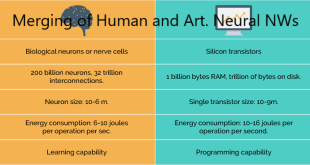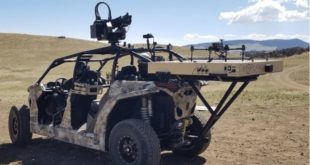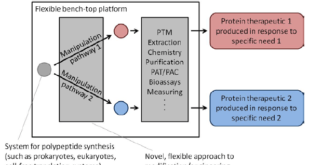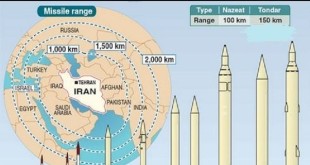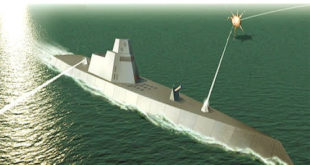All kinds of engineering infrastructures undergo aging, and damage appears as a consequence of the loads applied to them, so inspection and maintenance actions are required to predict and lengthen their lifetime thus avoiding catastrophic failures. Due to the harsh conditions suffered by aircraft structures, periodic and scheduled inspection and …
Read More »Quantum Sensors like Quantum magnetometers entering commercial market to detect and measure extremely small signals
The world, say many experts, is on the verge of a second quantum revolution. Energy quantization gave us modern electronics via the transistor and the laser, but humans’ burgeoning ability to manipulate individual atoms and electrons could potentially transform industries ranging from communications and energy to medicine and defense. The most …
Read More »Emerging Artificial-biological hybrid computing will enable Integration of Artificial and Human Intelligence (AI & HI)
Artificial intelligence is a branch of computer science dealing with the simulation of intelligent behavior in computers. A computer system able to perform tasks that normally require human intelligence, such as visual perception, speech recognition, decision-making, and translation between languages. The first wave of AI was rule-based and “second wave” …
Read More »Drones that can Autonomously launch and Land from a moving platform are new requirements for Defense and Security
An unmanned aerial vehicle (UAV) ( commonly known as a drone) is an aircraft without a human pilot on board. UAVs are a component of an unmanned aircraft system (UAS); which include a UAV, a ground-based controller, and a system of communications between the two. The flight of UAVs may …
Read More »DARPA SenSARS project aims to identify airborne pathogens like COVID-19 in seconds or minutes
As the virus that causes COVID-19 began to spread from person to person in communities (community transmission), scientists needed to track the disease and try to slow its spread. Fast and reliable tests for the new coronavirus are urgently needed to bring the pandemic under control as soon as possible. …
Read More »DARPA Battlefield Medicine Bio-MOD program deveoping high speed manufacturing and delivery of urgently needed pharmaceutical products to Wounded Soldiers
Battlefield medicine, also called field surgery and later combat casualty care, is the treatment of wounded combatants and non-combatants in or near an area of combat. Studies of historical casualty rates have shown that about half of military personnel killed in action died from the loss of blood and that …
Read More »DARPA ( AIE, XAI and AI Next) developing “third wave” AI based adaptive military systems that are trustworthy, learn continuously, and explain their rationale
The first Wave of AI is Crafted Knowledge, which includes rule-based AI systems. In the first wave,humans defined the rules for the Intelligent machines and they follow the rules. The second wave of AI is Statistical Learning, which includes machine becoming intelligent by using statistical methods. This includes all machine …
Read More »US-Iran conflict will be threat to Middle East because of Iran’s growing military power and deterrent capability
The threat of war between the US and Iran escalated in Jan 2020 when in retaliation for the U.S. assassination of military leader Qasem Soleimani, Iran launched a ballistic missile attack on two Iraqi bases housing U.S. troops. This action marks the most direct Iranian attack on the U.S. in …
Read More »US Navy developing next generation laser weapons for defending warships from ballistic and cruise missiles to Hypersonic Missiles
Navy ships face an increasing number of threats in conducting their missions, including UAVs, armed small boats, and adversary intelligence, surveillance and reconnaissance systems. The US Navy is concerned about the survivability of Navy surface ships in potential combat situations against adversaries, such as China, that are armed with large numbers …
Read More »Amid Rising naval threats from Russia and China enhanced collaboration of Royal Navy and US Navy
Russia and china are asserting their growing military might and reach through seas a threat to NATO nations. Russian naval activity is now at its highest levels since the Cold War. Head of the Russian Navy, Admiral Vladimir Korolev stated that in 2016 their submarine fleet had spent more than …
Read More » International Defense Security & Technology Your trusted Source for News, Research and Analysis
International Defense Security & Technology Your trusted Source for News, Research and Analysis


